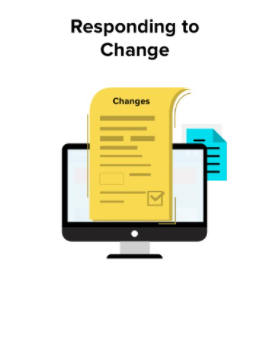Have you heard people saying “I hate coding”? Or, come across a situation where the client and development team are not in sync with the implementation of an idea.
Take a look at the picture below. The implementation of a new feature can be challenging for the software development team if all stakeholders are not in the loop about how to solve a problem. For instance, this picture describes what communication can be like in a disorganized team:

This major gap can be handled by using Low-code in Agile. Low-Code allows business users, developers and IT to collaborate, innovate, and deliver enterprise grade applications. Organizations can build apps faster and smarter. It allows business and IT to collaborate in real time using visual models to capture business requirements, quickly iterate and scale apps without losing the project’s essence.
What is Low-code?
Low-code is a visual approach to application development that enables development teams and business users to leverage reusable components and model-driven logic to rapidly build and deploy applications.
Agile with a capital “A”, was introduced a few years ahead of low-code. It was such a transformative way of approaching application development that it’s not surprising the fundamental principles of Agile are mirrored in the low-code platform. These low-code platforms eliminate the need to write code by abstracting the tedious plumbing and infrastructure tasks typically required in application development and replacing them with visual drag-and-drop tools and process modelling, reusable components and real-time collaboration.
The fundamental core values of Agile are:

- Prioritizing effective interaction.
- Quickly getting to working apps.
- Intense collaboration.
- Continuously adapting to change.
And these are fundamental values of low-code as well!
Low-code and Agile: Another one of software development history’s great pairings.
Agile and low-code share the same overarching goal: A better way to develop software.
With the above introduction the next question is how do we accelerate agile development using Low-code? Low-code fully supports and improves Agile development. Key areas & stakeholders where Low-code platforms can make a significant difference are:
1. Business line owners, developers, end users

All of them are indispensable contributors. Low-code was created in large part to enable those with the greatest interest in the application to participate intimately in its creation. Low-code enables everyone to be an active player on the team.
2. Being Adaptive to change.

The only constant thing in the world is change. Truly, once the initial idea is conceived, an application changes and evolves over and over again, as it is developed and after it is deployed. The Agile approach welcomes change, and low-code accommodates it — through small teams that work in close collaboration, microservices-based architecture that hones focus and effort, and instant cloud deployment to put the changes in action.
3. Team Work.

Any team is only as good as its ability to collaborate. Members of the team have different areas of expertise and speak different languages. The visual language of low-code goes a long way to overcoming these challenges and supports the Agile emphasis on customer collaboration.
4. Working Software.
Working software is fully integrated, tested, and ready to be shipped to customers or deployed into production. There’s no substitute for seeing an application in action to understand what works and what doesn’t, and maybe trigger a genius idea. With its model-based design and visual development environment, low-code accelerates development by an order (or orders) of magnitude. Agile prioritizes “working software” over “comprehensive documentation.”5. Effective Feedback and Retrospection
Collaboration, change management, working software — none of that happens without an active, ongoing, effective feedback mechanism. That’s why it needs to be built into the low-code platform. Stories and updates, corrections and comments, notes and responses — all are automatic and readily accessible. This is a key strength of the particular low-code platform and one of the important contributions to bringing the Agile philosophy to life.With focus on the above key areas in an enterprise, Low-Code can reduce some of the most common issues between business leaders and IT leaders. An enterprise that has adopted a Low-Code platform and imparts Agile culture, can create valuable flexibility for business decisions and enable faster time to value for its clients.
Given that the future of application development lies with software engineering professionals, it is best if this community leverages the power of Low-Code to concurrently maximize quality & speed.
References:
https://omnepresent.com/blog/5-ways-you-can-boost-your-agile-development-using-low-code/
https://www.mendix.com/blog/low-code-principle-3-agility/
https://digitally.cognizant.com/its-high-time-for-low-code-codex6669
http://www.agile-process.org/working.html
https://wolfmatrix.com/software-project-management/reasons-behind-failed-software-delivery/
https://www.goodday.work/team-collaboration
https://www.mobileappdaily.com/agile-methodology-in-app-development